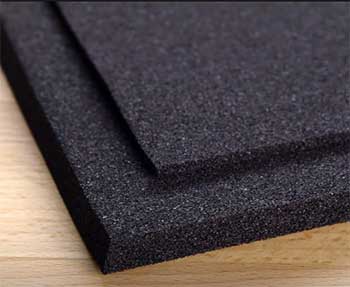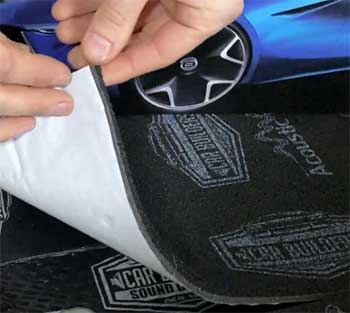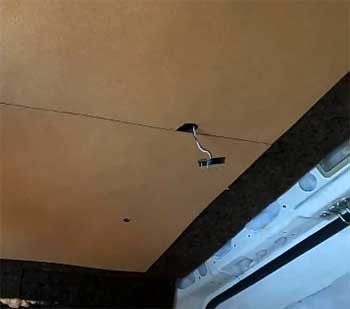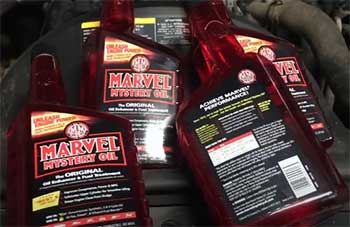Headliner board is an insulation board commonly used in the automotive and marine industries to provide thermal and acoustic insulation.
It is made from a combination of materials such as fiberglass, foam, or other synthetic materials that are laminated together to form a lightweight and rigid board.
The purpose of headliner boards is to provide a barrier between the vehicle or boat’s interior and the outside environment. But several alternatives to headliner boards can be used for similar purposes, and in this article, you’ll get to know about them.
Headliner Board Substitutes
- Closed-cell foam

Closed-cell foam is a popular insulation material that can be an alternative to headliner boards in various applications, particularly in the automotive and marine industries.
This type of foam is made from synthetic materials and has a closed-cell structure that provides effective thermal and acoustic insulation.
It offers excellent insulation properties, which can help regulate the temperature within the vehicle or boat’s interior.
It can also provide acoustic insulation, effectively reducing noise levels inside the cabin.
Closed-cell foam is lightweight and flexible, allowing it to conform to the contours and shapes of various surfaces. This quality makes it an excellent choice for insulating tight spaces.
Moreover, it is resistant to moisture, making it ideal for marine applications where humidity and moisture are present.
The closed-cell structure also makes it resistant to mold and mildew, thus helping to maintain a clean and healthy environment.
While closed-cell foam can be more expensive than headliner boards, it generally has a longer lifespan. It is important to note that closed-cell foam requires specialized adhesives and techniques for installation, which can be more challenging than installing a headliner board. Additionally, closed-cell foam is more flammable than headliner board, which may be a concern in certain applications.
- Carpet Underlayment
Carpet underlayment is a foam padding material that is often used beneath carpets, but it can also serve as an alternative to headliner boards. It is commonly used as an insulation material in the automotive and marine industries due to its sound-deadening properties.

The foam padding helps absorb sound waves, preventing them from echoing throughout the interior.
Another benefit of using carpet underlayment is its versatility.
It can be easily cut to fit any space, making it ideal for custom applications.
Also, it can be combined with other insulation materials to provide superior insulation and noise reduction.
Compared to other insulation materials, carpet underlayment is relatively affordable.
But, it is not as durable as other materials and may require more frequent replacement. Installing carpet underlayment is pretty simple.
It can be glued to the surface, such as the roof of a vehicle or boat. But it may require additional steps, such as using a specialized spray adhesive or adding a layer of adhesive, to ensure a secure and long-lasting installation.
The disadvantage of using carpet underlayment as an alternative to a headliner board is its thickness. Since it is designed to be used as padding beneath a carpeted surface, it may be too thick for where headroom is limited.
- Cork insulation
Headliner boards can be replaced with cork insulation, which is sustainable and environmentally beneficial. The product is a sustainable and renewable resource because it is made from the bark of cork oak trees.

The strong thermal insulation capabilities are one of its main advantages over the headliner board.
Cork is a natural insulator; it can fend against heat transmission and maintain a pleasant temperature inside a car or boat, regardless of the weather.
So, it is an ideal option if you spend a lot of time in your vehicles or boats or live in regions with extreme temperatures.
Another significant advantage of cork insulation is its durability. The material is strong, resilient, and can withstand wear and tear.
Cork is perfect for usage in marine areas since it also resists rot and dampness.
One potential disadvantage of cork insulation is its higher cost than other insulation materials, such as closed-cell foam or carpet underlayment.
However, its sustainability and eco-friendliness, durability, superior insulation, and sound-deadening properties make it a worthwhile investment for those who prioritize green materials.
- Fibreglass Insulation
Another alternative to the headliner board is fiberglass insulation. Rather than serving as a standalone headliner, fiberglass insulation is commonly installed behind headliner materials to enhance the insulation and soundproofing of the interior.
Its flexibility and versatility make it ideal for fitting irregular surfaces and customized installations.
However, fiberglass insulation can be challenging to handle, and its microscopic particles can pose a health risk if inhaled, necessitating the use of safety equipment such as gloves and masks.
Also Read: Raptor Liner Hardener Alternatives.
Frequently Asked Questions (FAQ)
The best alternatives to headliners are closed-cell foam, carpet underlayment, and cork insulation.
Headliner board is made of a pressed fiberboard or foam-backed material, often covered in fabric or vinyl.
Yes, you can use any material for the headliner. But first, check to see if the material is breathable. Then ensure the fabric you select is strong enough to withstand the elements.
Felt can be used as a headliner material. Still, it may not provide the same durability, insulation, or sound-deadening properties as other materials like foam-backed fiberboard or closed-cell foam.
To stick something to a headliner, clean the surface thoroughly and use a high-strength adhesive designed explicitly for headliner materials, applying it evenly to both surfaces and pressing them firmly together.
Final Words
Headliner board alternatives like closed-cell foam, carpet underlayment, cork insulation, etc., have unique benefits and drawbacks. So, you must choose the material carefully based on your preferences, needs, and budget.
Ultimately, replacing or installing a Headliner is an effective way to improve the appearance and comfort of a vehicle or boat interior. Choosing a suitable alternative can give you better insulation, soundproofing, and durability.
Regardless of the material chosen, exploring headliner board alternatives can lead to a better overall result for any Headliner project.

